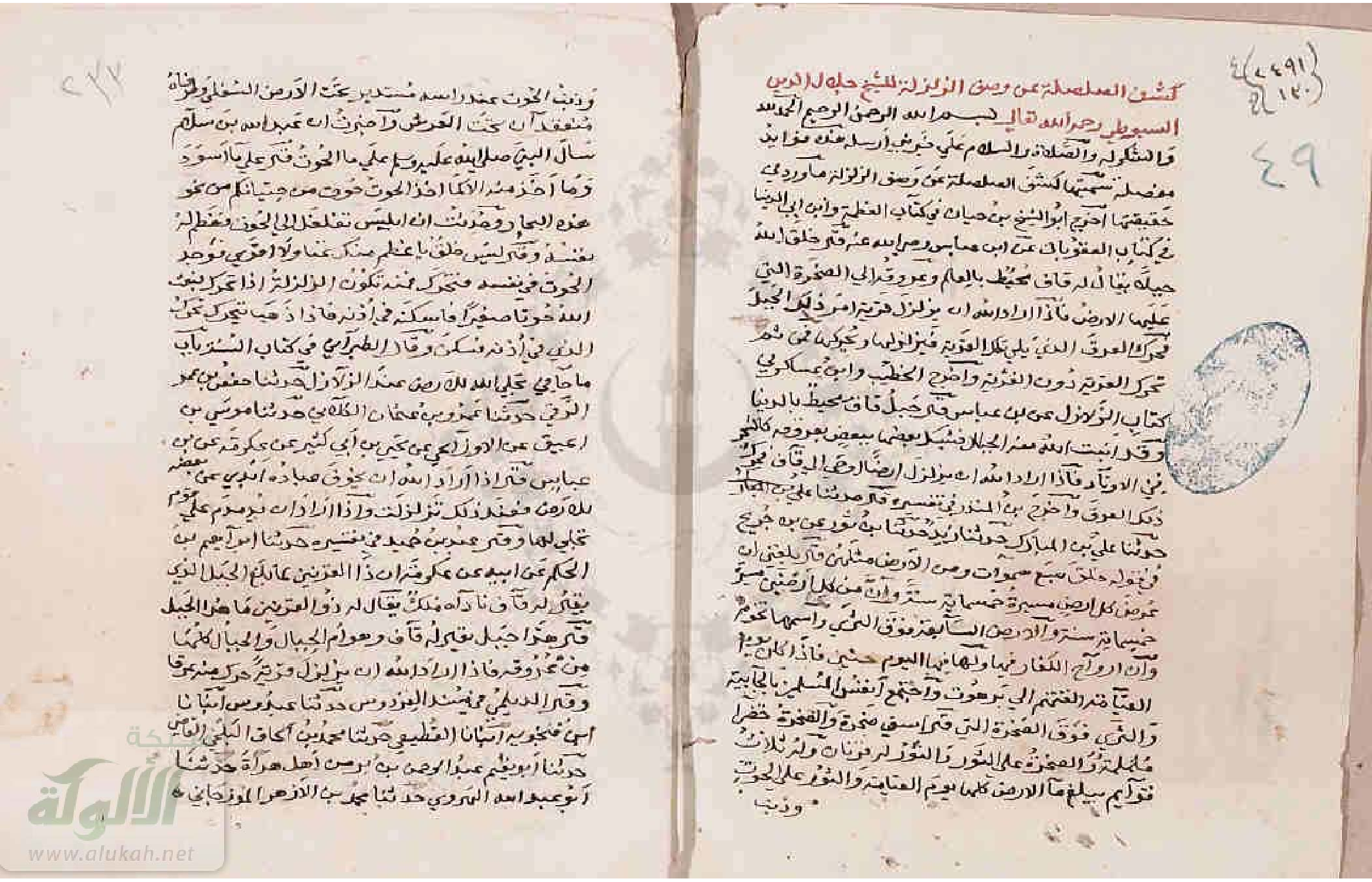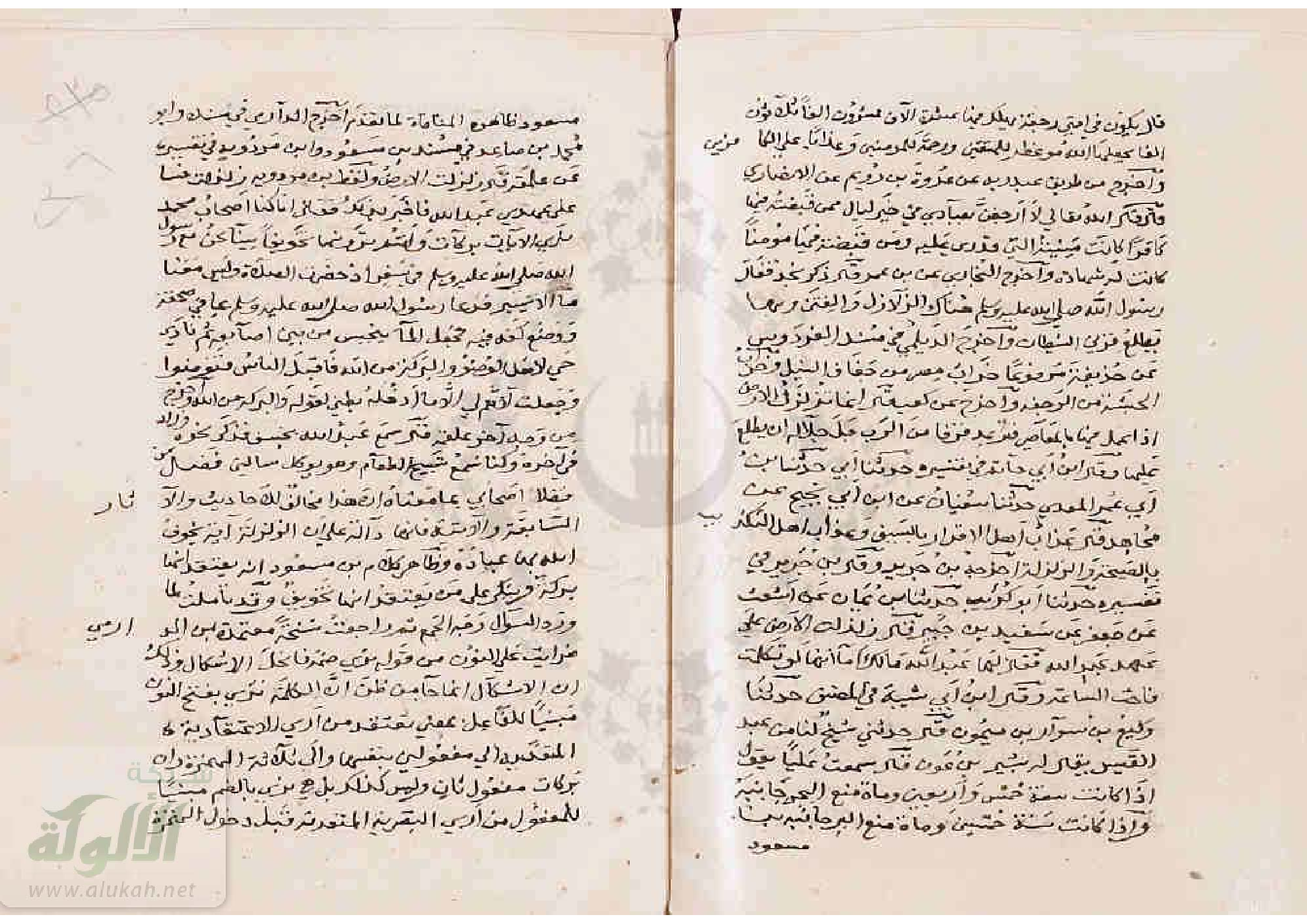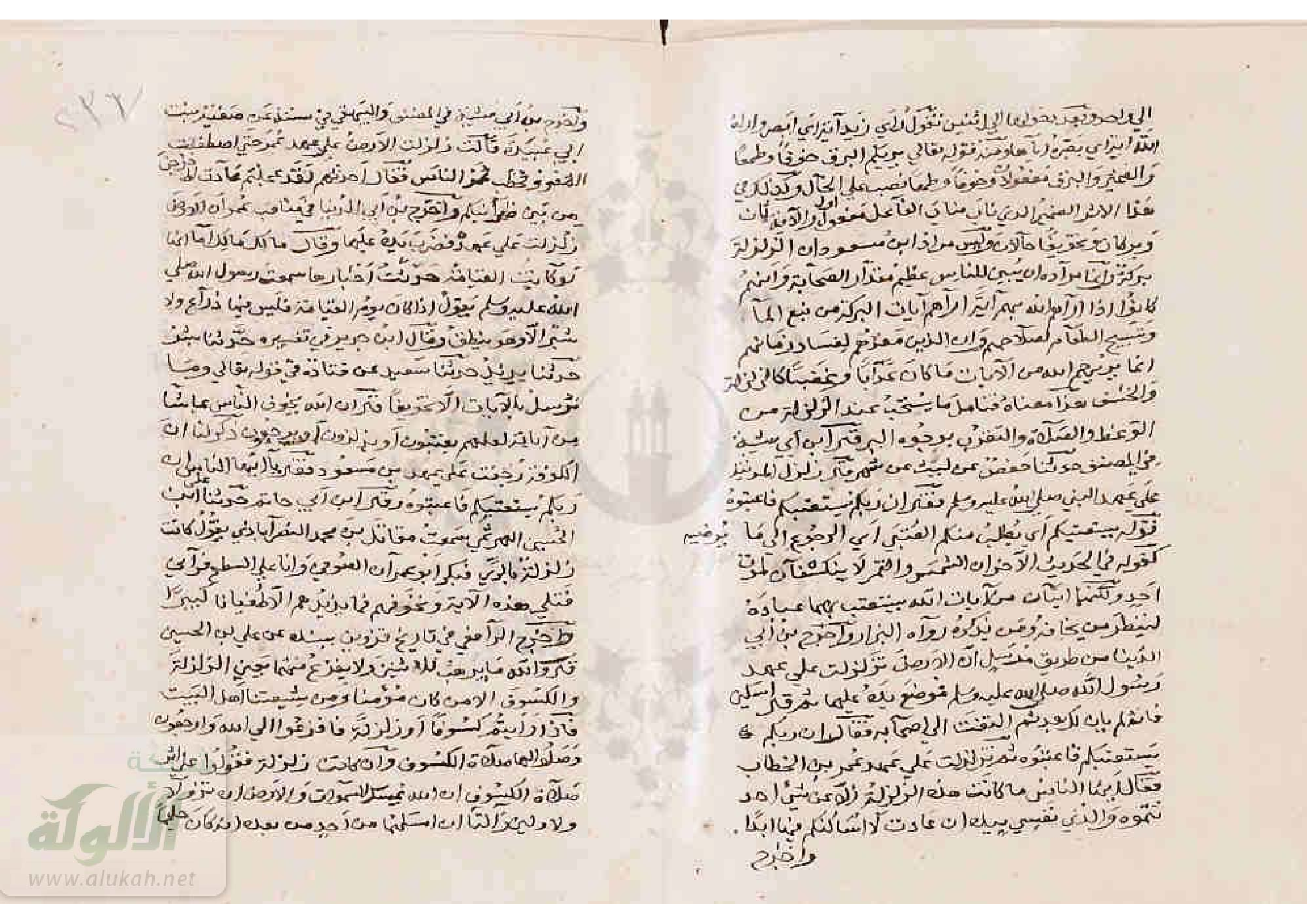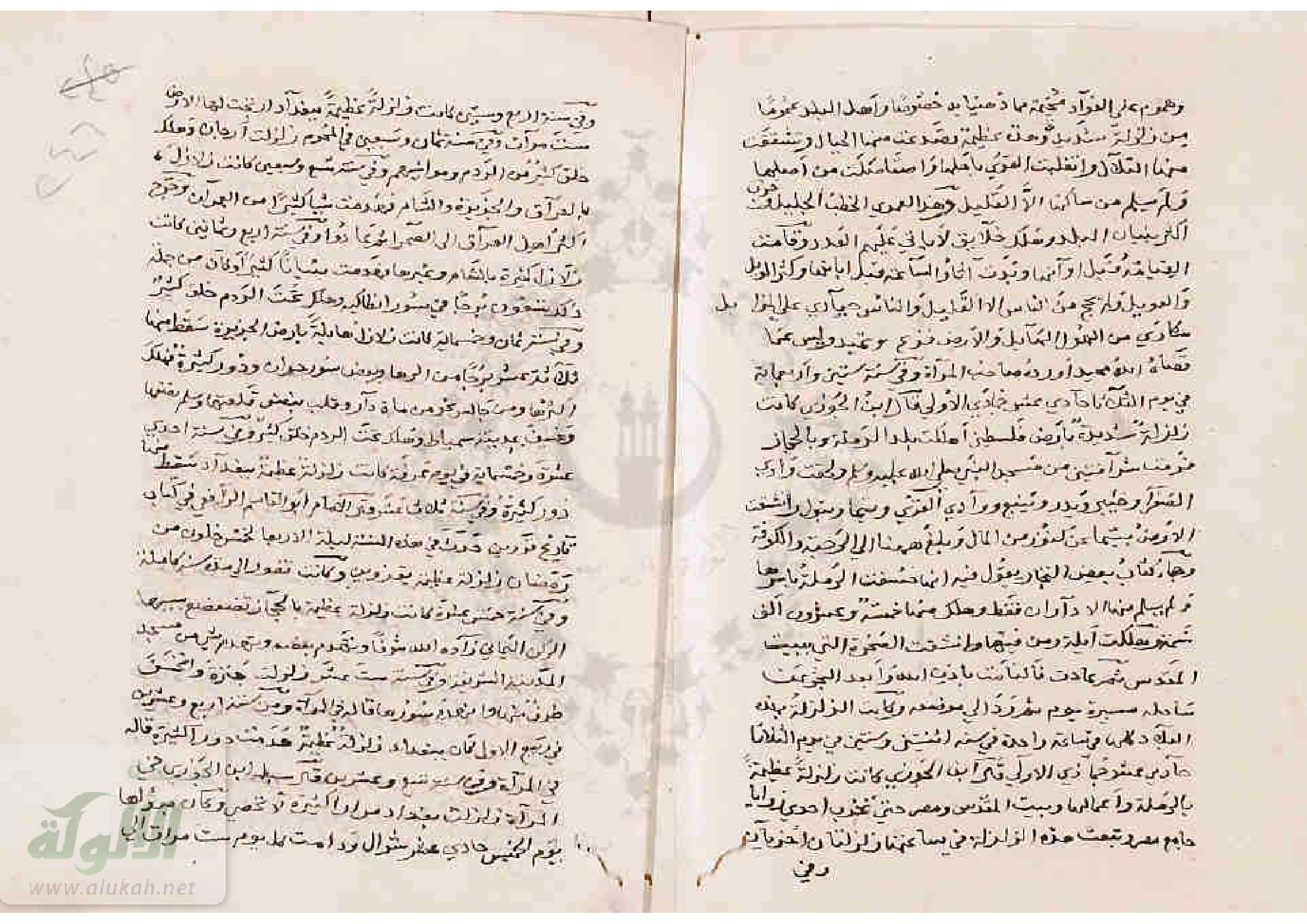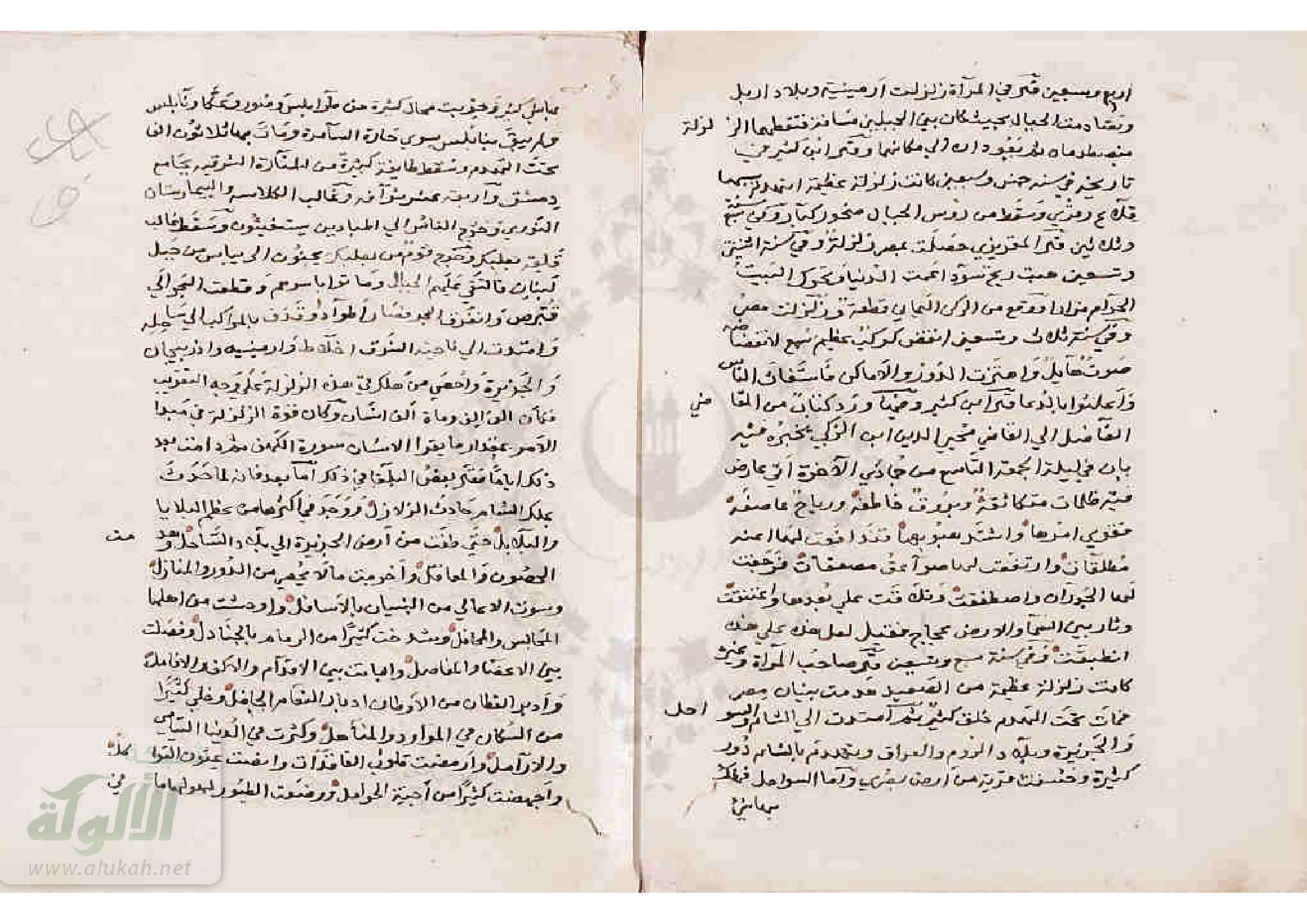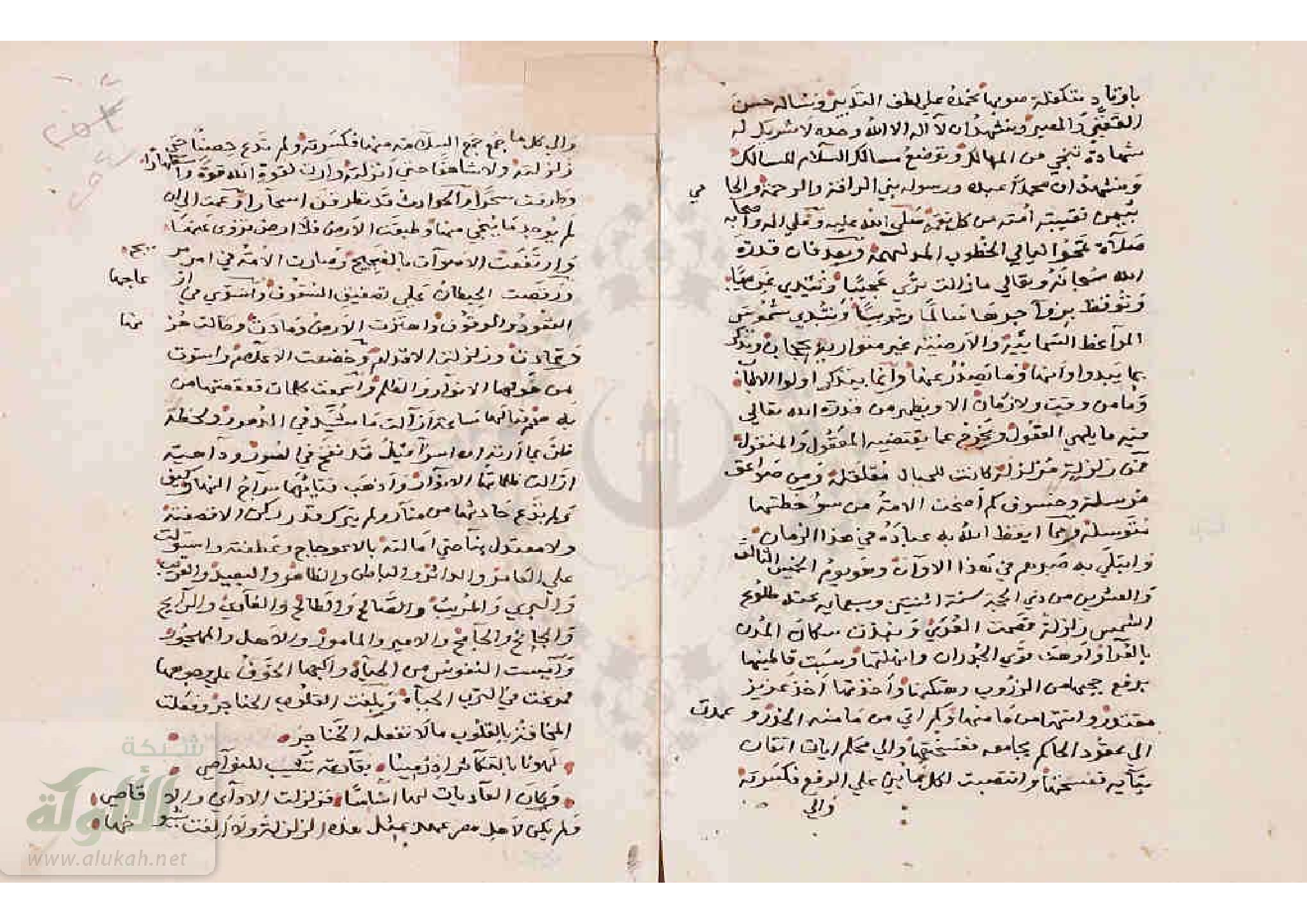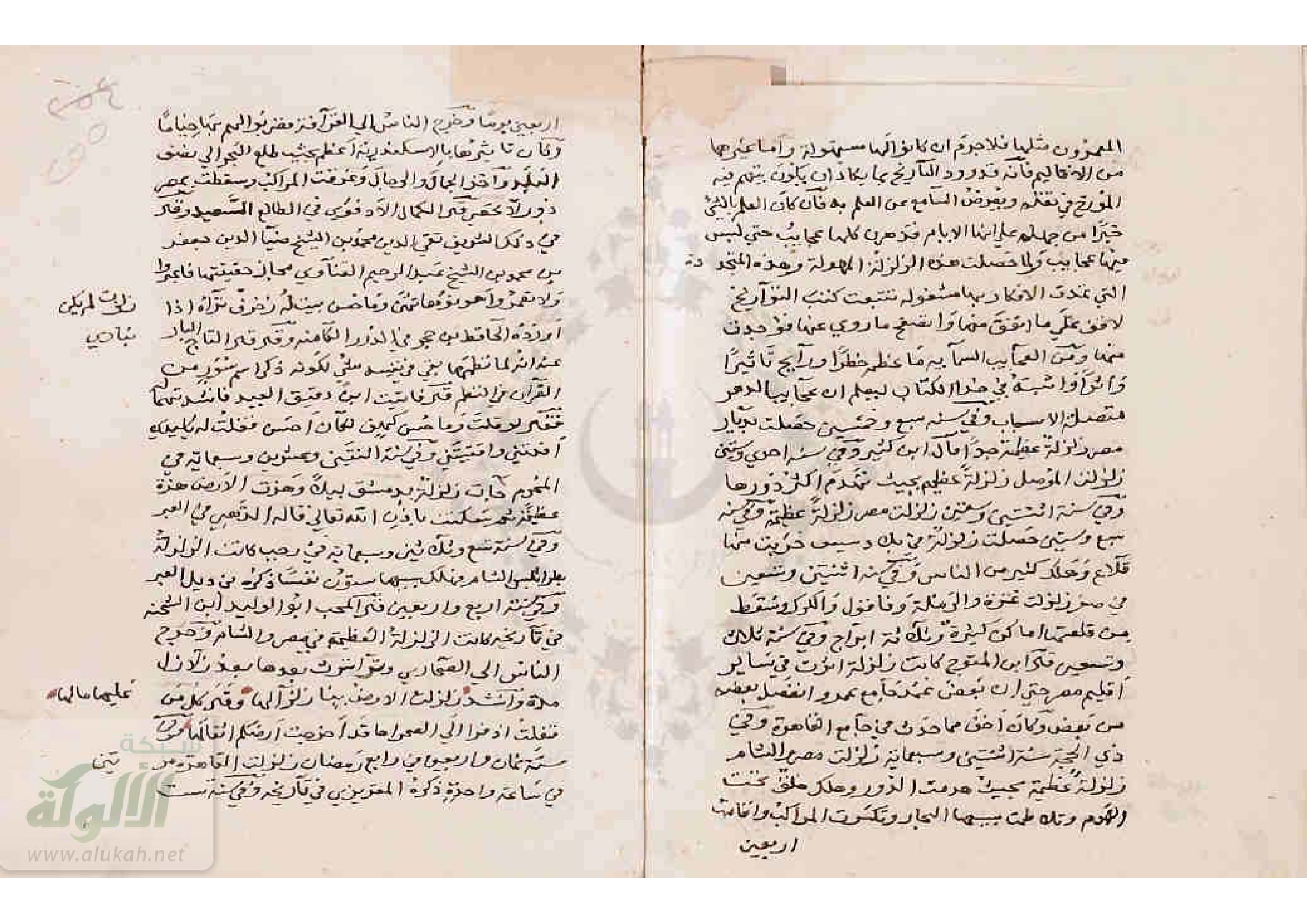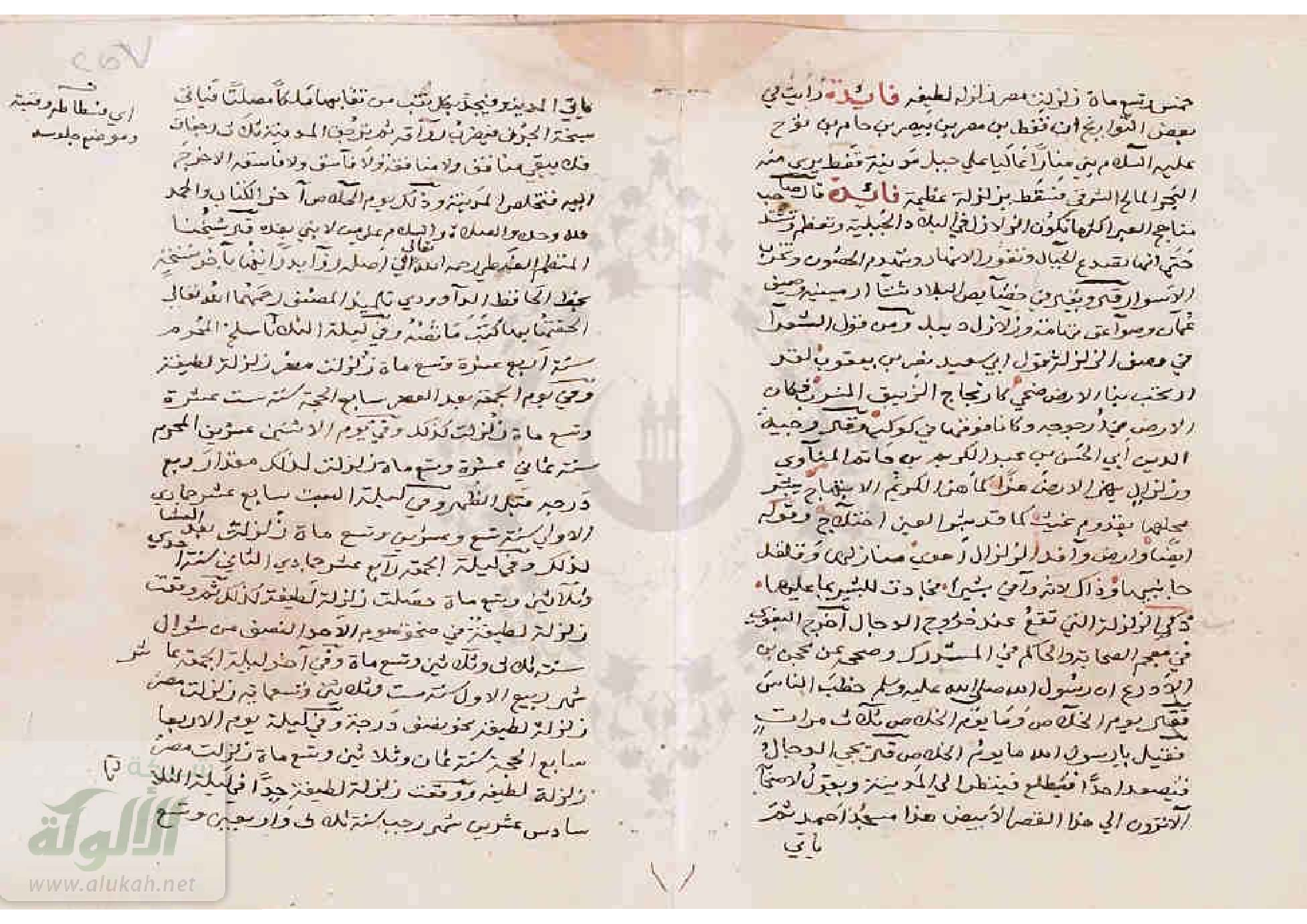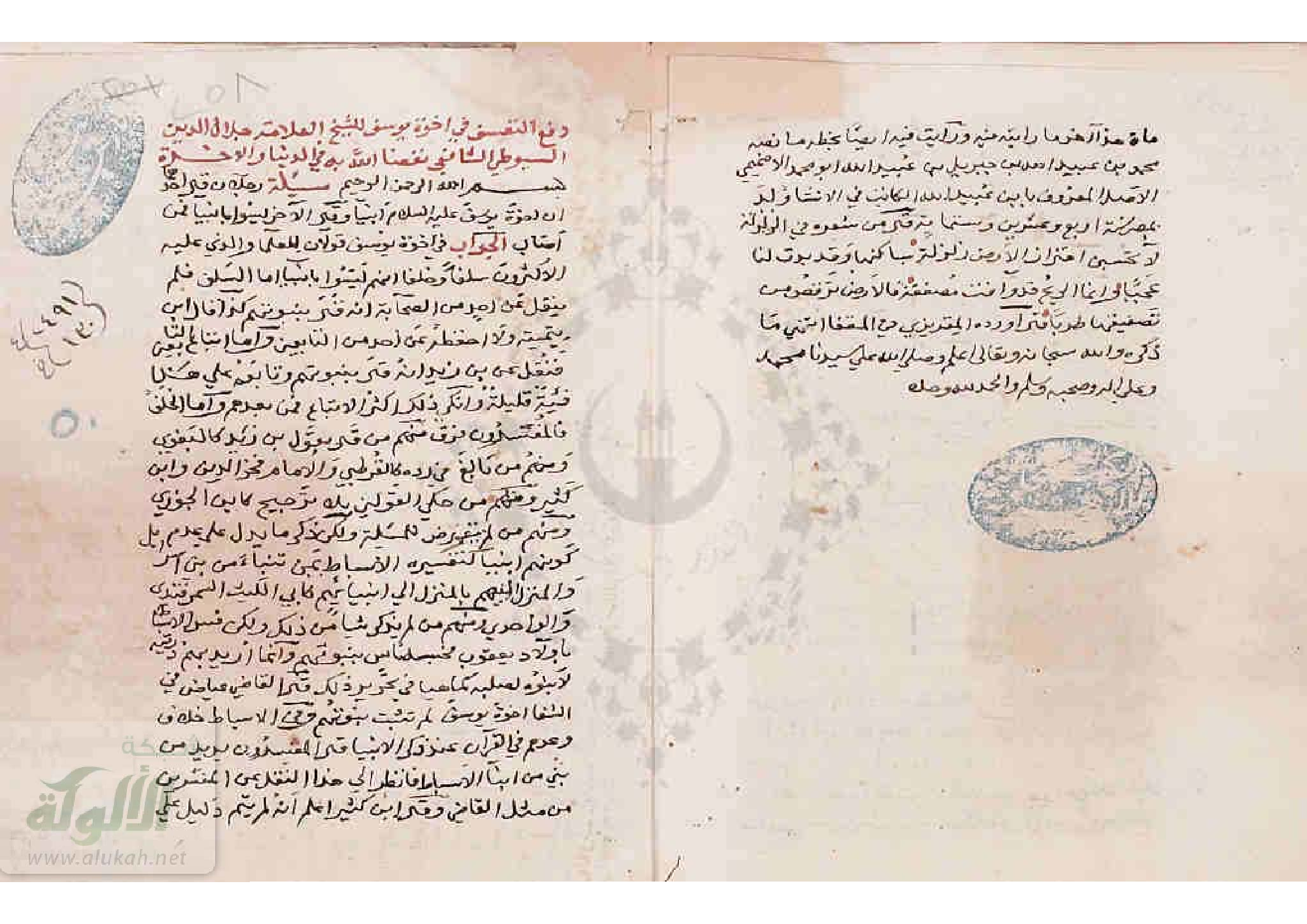... The tide of Moslem reaction, which Il-Ghazi, Belek, and Aksungur had led with only partial success because of the continued internecine quarrels
prevailing among the various Moslem factions, now surged ahead under the able leadership of a new chieftain,
Zengi. His rise to power began in
April 1127 when the sultan conferred on him the function of commissioner in Iraq and the principalities of Mosul and Aleppo in recognition of
his manifest military abilities.
14 Zengi's significance lay not only in the fact that he determined from the first to become the
master of all Moslem Syria, but, more significantly, in his policy of deliberately refraining from serious attack on the Latin states and
concentrating his assaults on his Moslem rivals. His program of the status quo in respect to the Franks was of course designed to give him a
free hand in his endeavors to best his Moslem foes and did give a badly needed breathing spell to the Christians. But when his consolidation was
completed, the respite proved to be illusory, for the effect of the consolidation was to create an effective dam to the spreading Frankish tide
and to cause the loss of the county of Edessa.
Having quickly established his rule over Mosul in September 1127, Zengi soon obtained control of Nisibin, Sinjar, and Harran from his Moslem rivals.
Shortly thereafter he dispatched an envoy to Joscelin with a request for a short truce. Joscelin agreed. The remainder of Moslem Syria and the
important prize of Aleppo soon fell under Zengi's sway, for his troops occupied Aleppo in January 1128, and he himself seized Manbij and
Buza'ah in June 1129. The Sultan recognized his de facto control of Syria and whetted his ambitions for still further conquests when he
conferred on him, shortly after the death of Tughtigin, in February 1128 a royal diploma granting to him all Syria and adjacent countries.
Flushed with his military and diplomatic triumphs, Zengi, having successfully summoned Taj-al-Muluk Bori, Tughtigin s son and the new ruler of
Damascus, to a jihad against the Franks, treacherously betrayed his new ally and imprisoned his son Sevinj in Aleppo.Then, with the connivance
of his fellow conspirator, Kir-Khan, the ruler of Home, he captured Hamah in September 1129 and conferred the rule of that city on Kir-Khan.
But Kir-Khan soon suffered deposition from his new post at Zengi's hands. Not until the autumn of 1129 when Moslem Homs successfully resisted
Zengi's investment did the expanding power of the new leader of the Moslem world receive a check.
15
Meanwhile the Franks, unaware of the import of Zengi's maneuvers, were concentrating their attention upon Damascus. Baldwin and the other leaders
sent Hugh of Payens, the fast master of the Knights of the Temple, to Europe in 1128 to obtain help. Considerable success attended his efforts,
for he returned to Palestine in 1129 with many companies of noblemen and Fulk, the count of Anjou.
Virtually simultaneous developments in Damascus itself perhaps quickened the tempo of the Frankish planning operations and hastened the attack.
The vizir of Damascus, with the approval and connivance of a local sect of Assassins and their leader Isma'il
wrote the Franks and offered to surrender Damascus to them in exchange for Tyre. They agreed. However, the plot was discovered and the vizir,
many of his henchmen, and the Assassins were executed on September 4, 1129. Isma'il, fearing that he, too, would fall victim to Damascus' reprisals,
wrote to the Latins and offered to surrender Banyas to them in exchange for asylum. They concurred and the long-planned expedition began.
16
The attacking forces advanced on Banyas, and, having received its surrender from Isma'il, proceeded to Damascus and encamped nearby at the end of November 1129.
Battle was joined in the Marj as-Sufaer, some miles southwest of Damascus, and the Moslems scored a great triumph over the Franks. This disaster was soon followed
by another, for winter rains and fog now set in and made military operations impossible. Accordingly, the Franks abandoned their project and returned home on
December 5 with their rearguard closely pressed by the enemy. Although failure had attended the expedition proper, yet the not unimportant town of Banyas was now a Frankish possession.
The favorable military trends for the Moslems in the closing weeks of 1129 were soon complemented by political ones as well, for the fortunes of the principality of Antioch were
imperiled by the death of its valiant ruler, Bohemond II, at the hands of Danishmendid troops in February 1130 during the wane of a campaign in Cilicia, and by the machinations of
his widow Alice, daughter of Baldwin. Bereft of their young leader, the Antiochenes held a council and then called on Baldwin for assistance. The king, fearful for the safety of
Antioch in this crisis, complied. Meanwhile, Alice was scheming, despite the solid opposition of her chief men and the entire population, to obtain the rule of Antioch for herself
and to disinherit her daughter, Constance, the legal heir. In order to effect her plan, she called upon Zengi for assistance. Unluckily for her, the messenger was captured by the
Franks, and, upon being interrogated by Baldwin, confessed the plot. Baldwin hastened to Antioch, but Alice forbade him entrance to the city. However, a number of lay and clerical
leaders disobeyed her commands and by a prearranged plan permitted Fulk and Joscelin to enter. Thereupon Baldwin entered Antioch and at length secured Alice's reluctant capitulation.
He decreed that she be forcibly expelled from Antioch and that the role of Antioch and its dependencies be entrusted to Joscelin and the principal men of the city, who should administer them
for Constance until her marriage. Her husband would then become lord of Antioch. Then, tempering his wrath, he granted to Alice the coast cities of Latakia and Jabala,
which her late husband had deeded as a dowry to her at the time of her marriage. The king then returned to Jerusalem.
Encouraged by the manifest disaffection in the ranks of the Latins, Zengi invaded the principality of Antioch in the spring of 1130 and laid siege to al-Atharib.
When the Franks, including Baldwin, advanced to the relief of the beleaguered city, Zengi's officers advised him to retreat, but he scorned their advice.
A battle followed, and the Moslems were victorious. Zengi then advanced on the fortress of Harim on the outskirts of Antioch but was persuaded by the inhabitants to abandon his siege in return
for half of the revenues of the district. A truce was concluded, and he returned to his own territories. The ending of Zengi's campaign of 1130 marked the beginning of a considerable
respite from major warfare with him for the Franks, for his energies were consumed in war with a league of rivals in the latter part of 1130, in struggles with the revived caliphate in the period 1131-1133,
and in a war with the Kurds in 1134.
Fortunate it was for the Franks that the early 1130's marked a lull in the Moslem offensive, for 1131 marked the passing of those veritable shields and bucklers of the crusading states,
Baldwin and Joscelin. Baldwin died on August 21 in Jerusalem after committing the rule of the kingdom to his eldest daughter Melisend, his son-in-law Fulk, and his two-year-old grandson
Baldwin.
17 Fulk, who became the fourth ruler of the kingdom on the following September 14, had come out to the Holy Land in the spring of 1120 in response to an invitation from
Baldwin to marry Melisend. A mature man of thirty-eight with a background and training befitting him for his new duties, he had had much experience as a military and political chieftain
in France in his role of count of Touraine, Maine, and Anjou, as Baldwin's lieutenant from 1129 to 1131, and as the ruler of the cities of Tyre and Acre which he received at the time of his marriage to Melisend.
Less lucky was the county of Edessa. Joscelin continued his vigorous yet politic rule in the north during 1130 and 1131, invading the northern Aleppan country and battling successfully with Sever,
Zengi's representative in Aleppo, and suffering, in retaliation, Sevar's attacks on al-Atharib's suburbs. Perhaps seeking the sultan's support against Zengi, Joscelin refused asylum to his
erstwhile ally, Dubais, when that worthy fell afoul of the sultan's displeasure. But injuries incurred in 1130 during the course of a siege of a Moslem castle at length had their cumulative effect
and he died shortly after Baldwin. Joscelin II, markedly inferior to his illustrious sire, succeed to the rule of the county of Edessa.
19
This was a disaster, indeed, for a state facing the steadily waxing ambition of Zengi.
Fresh troubles in Antioch occupied much of Fulk's attention during the first years of his rule. Alice revived her claim to Antioch and enlisted as her supporters Pons and Joscelin II.
But other nobles, resentful of Alice's aspirations, appealed to Fulk. Much perturbed, the king hastened north by land as far as Beirut but was obliged to continue his journey by sea because
of Pons' refusal to allow him to pass through the county of Tripoli. At length he reached St. Simeon and was met by influential leaders of Antioch who now gave him the command
of the principality and city of Antioch. Pons, however, refused to capitulate and strengthened his fortresses, Chastel-Rouge and Arzghin. Fulk thereupon raised an army and, meeting
Pons in a bitterly contested battle at Chastel-Rouge in the summer of 1132, gained the victory and put him and his followers to flight. King and count were at length reconciled, but
Fulk, aware of the general fear that sedition might appear once more, agreed to tarry in Antioch and assumed the role of bailli. He busied himself with affairs of state, with the
advice and consent of the chief nobles, and then placed Reginald Masoier in charge of the principality as constable.
The new entente between the kingdom of Jerusalem and the county of Tripoli was soon tested, for the long dormant Damascus and Tripolitan frontiers awoke to activity in the
closing weeks of 1132. Shams-al-Muluk Isma'il, the son and successor of Taj-al-Muluk Isma'il in the rule of Damascus, upon learning that the Franks of Beirut had seized
the goods of various Damascene merchants in violation of their treaty with Damascus, tried vainly to obtain satisfaction for them. Then, seeking revenge, be secretly made
military preparations, and, leading out his troops against Banyas, captured the town on December 21 before Falk was able to succor it.
19
Although the fall of Banyas spread much fear among the Franks, still more alarming news came from Tripoli at the same time to the
effect that a Turkoman force had invaded Tripoli and had defeated Pons in battle. Pons and his companions retired to Ba'rin which
the Turkomans promptly invested. Then, fleeing to Tripoli, he summoned help from the other Frankish chiefs; a gratifying response followed. Perhaps his most valuable ally was Fulk,
who at the moment was marching north to assist Antioch against new Moslem incursions. Learning at Sidon of Pons' plight from his wife Cecilia, he abandoned his northern
campaign and went to his vassal's rescue. When Pons believed that he was strong enough to take the field, he advanced upon Ba'rin again and raised the siege. The ensuing battle was
indecisive, for the Franks retired to Rafaniyah in good order after considerable battle losses, and the Turkomans likewise withdrew.
20
Fulk now rammed his advance, reached Antioch, and presently captured the nearby fortress of Qusair from the Moslems. Informed that Moslem troops commanded by Sevar had concentrated at
Qinnasrin and were planning to use it as a base of operations, he led out his forces from Antioch and encamped near the fortress of Harim. After waiting vainly several days for the enemy
to move, Fulk suddenly attacked and soundly whipped the surprised Saracens. Then, having imposed a truce upon them (January 1133), be returned to Antioch with much booty.
21
Fulk's favor with both the masses and classes of Antioch was now greater than ever before. Shortly before his return to Jerusalem, the Antiochene nobility, seeking a more stable government
for their principality, requested him to obtain a husband for Constance, who was still a minor. With their approval he selected Raymond, son of the count of Poitou, and a mission was
accordingly sent to him, with the greatest possible secrecy.
Although the victory of Qinnasrin relieved pressure on the Aleppan front, the Damascus front once more became very menacing for the Franks. Encouraged by his capture of Banyas
and learning that the caliph of Baghdad was planning to besiege Zengi in Mosul, Shams-al-Muluk Isma'il now turned his attention to his Moslem rivals and obtained Hamah by surrender from
Zengi's commander on August 6, 1133. Presently he obliged Moslem Shaizar to become tributary to him. Then, having returned to Damascus in September 1133, he advanced on Tyron (Shaqif Tirun),
a Moslem stronghold near Sidon, and captured it in November from its commander Dahhak, who had pursued anti-Moslem as well as anti-Frankish tactics. Disturbed by Shams-al-Muluk Isma'il's
waxing power, the Franks invaded the Hauran in 1134, whereupon Shams-al-Muluk Isma'il, having ascertained the enemy's superior power, invaded the country around Acre, Tiberias, and Tyre
in a counter-stroke designed to make them withdraw. Success rewarded his efforts, and the Franks retired from the Hauran in October 1134 after securing a temporary peace from him in
September. But before he could effect his program in Moslem as well as in Latin Syria, he was murdered on January 30, 1135. He was succeeded by his brother,
Shihab-ad-Din Mahmud, in the rule of Damascus.
Meanwhile, Zengi, at long last free from major involvements with his Moslem enemies, now returned to his goal of the mastery of Moslem and Frankish Syria.
22
Quickly taking advantage of the political embarrassments of Damascus resulting from the assassination of its ruler, he advanced upon that city and began its investment
in the late winter of 1135. But the Damascenes, commanded by their mamluk Mu'in-ad-Din Unur (or Onor), so stoutly resisted him and so coldly rebuffed his demand for
their surrender that he made peace with the mamluk and withdrew on March 16. Although Zengi's dream of mastery over Damascus had not been realized, his other program of
gaining the mastery of the Frankish and Moslem fortresses which still threatened Aleppo went ahead unchecked. Inflicting major defeats on the principality of Antioch,
he easily captured al-Athirib in the course of a whirlwind campaign on April 17, 1135, and Zardana, Tall Aghdi, Merrat-an-Numan, Ma'arrat-Misrin, and Kafartab
shortly thereafter. The Moslem stronghold of Shaizar presently capitulated to him, and then, after a brief feint against the Frankish citadel of Ba'rin, he advanced on
unwary Moslem Homs and devastated its environs. Hearing that Frankish forces under the command of Pons were now engaged in Qinnasrin, Zengi advanced upon that city and by
skillful maneuvering forced them to withdraw. Thereupon he returned to Homs, and after unsuccessful attacks upon it in the opening days of August, repaired immediately thereafter to Mosul and thence to Baghdad.
Zengi was absent from the Syrian scene during the next year, his energies being consumed in squabbles between the caliph and the sultan, with a consequent personal postponement
of his long-tun program. But the program itself did not suffer, for his able lieutenant Sevar continued to defend his master's interests. He assailed Homs so vigorously in the autumn of
1135 that the sons of its ruler Kir-Khan, recognizing their own weakness and Sevar's might, surrendered Homs to Shihab-ad-Din Mahmud. Thereupon, Sever, nothing daunted, invaded the
Damascus country and obtained a peace treaty from SShihab-ad-Din Mahmud. The troublesome Damascus front was at long last pacified. Even more important triumphs soon followed,
for Sevar, thoroughly cognizant of Frankish weaknesses, invaded the principality of Antioch in April 1136, and, after pillaging a hundred villages, reached the coast and,
surprising the unwary defenders of Latakia, devastated the city and obtained many prisoners and much booty. So badly shaken was the Frankish power that no reprisal could be made.
In the words of a Moslem contemporary, "Such a calamity as this has never befallen the northern Franks."
Why had Moslem arms under Zengi and Sever pined such signal triumphs, comparable only to the Saracen victory at Harran in 1104, and why had their Frankish enemies failed to
capitalize on the victory of Qinnasrin? The answer may be found in the dissensions rampant in the ruling circles of Antioch, in the failure of Antioch's two major neighbors
to do much more than mark time and remain on the defensive during the rise of Zengi, and in the flaccid policies pursued by Fulk in respect to the north Syrian areas.
Despite the exile imposed upon her by her father, Alice returned to Antioch in 1135 and, ignoring her daughter Constance, assumed the active rule of the principality with
the approval of her sister Melisend, Fulk's wife, who persuaded her spouse not to interfere. No longer inhibited by the restraining influence of her kinsfolk, Alice
sought the support of the Byzantine emperor John by offering Constance's hand to his son Manuel. John assented. Then, to make matters worse, Ralph, the crafty patriarch of
Antioch, in order to obtain Alice's support against his clerical enemies, convinced her that the mission which had recently requested Raymond of Poitiers to repair to Antioch
desired to have him marry her. Great was her wrath when Raymond married Constance, in accordance with his oath of fealty to Ralph and an agreement made with him upon his arrival
in the latter half of 1136. Alice, sadly disillusioned, withdrew from Antioch and opposed Raymond with relentless fury. Ralph, believing that his position was now secure,
behaved presumptuously and arrogantly toward Raymond, who now retaliated by aligning himself with Ralph's foes
23 . The political and religious schisms wracking Antioch made it an easy prey for Sevar.
Almost equally conducive to Sevar's strategy of the offensive was the time-serving, defensive policy pursued by the county of Edessa and the kingdom of Jerusalem.
Neither state sought to capitalize on the victory over Sevar which they bad scored at Qinnasrin. Sevar attacked Zardana and Harim in 1134 and boldly invaded the districts of
Maarrat-an-Numan and Ma'arrat-Misrin and then returned to Aleppo laden with booty. There was no organized reprisal on the part of Edessa. The kingdom of Jerusalem, under Fulk's leadership,
pursued its new southern policy of guarding its immediate interests and, following the unsuccessful Damascus campaign of 1134, contented itself with the construction in 1136 of a fortress
at Bait Jibrin on the southern frontier as a means of checking the constant forays of the nearby garrison of Ascalon. This was a development of the policy inaugurated in 1133 of building
Chastel-Arnoul near Bait Nuba to guard the Jaffa-Jerusalem road for the pilgrims against recurrent attacks from Ascalon.
24
The full storm of the Moslem revanche broke in the opening months of 1137. Doubtless spurred on by Sevar's triumphant march to the sea, Beza-Uch, the commander of the Damascus forces,
invaded the county of Tripoli in March 1137 and routed the forces of the Tripolitan Franks in a bitterly fought battle. Pons, presently betrayed by the Syrians living on Mount Lebanon,
fell into enemy hands, and was put to death on March 25. Then, after capturing the castle of Ibn-al-Ahmar and a rich booty, Beza-Uch returned to Damascus. Meanwhile, Raymond II, Pons'
son and heir to the county, having rallied his forces, struck savagely in retaliation at the Syrians on Mount Lebanon, capturing, torturing, and executing many of their leaders.
Thereupon, Zengi, having obtained an armistice from and having established a friendly agreement with Shihab-ad-Din Mahmud, once more repaired to Syria, arriving in June 1137.
He at once dispatched his chief negotiator, Salah-ad-Din, to the Damascene fortress of Homs with instructions to obtain its surrender by negotiation from its commander,
Mu'in-ad-Din Unur. When negotiations failed, Zengi himself began the investment of the city. Failing after several weeks of fruitless alternate military action and threats
to achieve his aim and learning that the defenders were about to be aided by the Franks — this latter consideration indicates that the Latins were at long last understanding balance-of-power politics —
he departed on July 11 and began the siege of the nearby Frankish stronghold of Ba'rin in the county of Tripoli. Raymond II besought and obtained Fulk's support. But when Fulk arrived in Tripoli,
he learned the disheartening news that the principality of Antioch was now being invaded by the emperor John Comnenus and that the Antiochenes were seeking his aid. Fulk immediately held a council;
the decision was that Ba'rin should be helped first and then Antioch. Accordingly, the Franks advanced upon Zengi, whereupon the latter abandoned the siege of Ba`rin, fell upon the Franks,
and decimated their infantry. Raymond II and some of his knights were captured. Fulk recognized the futility of further resistance and retired into the fortress with the loss of all the baggage
intended for the succoring of Ba'rin. The Moslems again resumed the siege of Ba'rin, whereupon the imprisoned Franks appealed to Antioch, Jerusalem, and Edessa for aid.
A levee en masse followed. Jerusalem, Antioch, and Edessa answered the appeal. Grave indeed as was the plight of the kingdom of Jerusalem, it now became still more serious,
for Beza-Uch took advantage of its defenseless state and attacked and plundered the unfortified city of Nablus with impunity. Meanwhile Zengi pressed his attack unremittingly.
But, learning of the approach of the armies of Edessa and Jerusalem and fearing the loss of his prize, he offered peace terms providing for the surrender of Ba'rin and a safe-conduct
for the besieged. The Franks, unaware of the approach of the relief forces, accepted the offer and marched out safely only to meet the Frankish columns which presently arrived, too late.
Meanwhile, the sadly harried principality of Antioch had to meet new menaces from the north. Emperor John, continuing the policies of his father Alexius, had laid claim to Antioch
with all the adjacent provinces. The immediate cause of the revival of these claims was the receipt of the news that the Antiochenes had betrothed Constance to Raymond of Poitiers
instead of John's son Manuel. Another motive for this action was his desire to recover the Cilician towns taken by Leon the Roupenid. John, therefore, assembled an army and conquered
Leon's states. At length he reached Antioch and began investing it on August 29. Apprised of the developments at Antioch, Raymond of Poitiers hastened home from Ba'rin and took personal
charge of the defense. John pressed his attack so fiercely that at length Raymond sought peace and sent emissaries to the emperor. An agreement was drawn up with Fulk's approval in September 1137
providing that Raymond would become John's vassal with Antioch as his fief, and would surrender Antioch to him if John should recover Aleppo, Shaizar, Hamah, and Homs, and would grant them as
fiefs to Raymond. Raymond, together with Raymond II of Tripoli and Joscelin, tendered their oaths of fealty to the emperor, and the latter, having promised to campaign against the
Moslems in 1138 to recover the designated towns; returned to Cilicia to spend the winter.
The markedly anti-Moslem hue of the newly established Graeco-Antiochene entente became clearly visible in the latter part of February 1138 when Raymond of Antioch arrested several Moslem
merchants and Aleppan travelers in Antioch.
25 Then, in alliance with John, the Antiochene Franks began military operations on March 31 and advanced due east on Buza'ah,
capturing it on April 9. Allied expeditions were now dispatched from Buza'ah in all directions and scoured even the trans-Euphratean countryside in early April. Zengi, apprised at Homs,
which he was then besieging, of the recent events, sent reinforcements under Sevar's command to Aleppo, whereupon the allies advanced west on Aleppo and reached it on April 14,
five days after Sevar's reinforcements arrived. The brief siege ended on April 20 with the allies withdrawing to the west and south. Several easy triumphs were now gained by the
allies with the capture of al-Atharib following its abandonment by its garrison on April 21 and the capture of Kafartab following a short struggle. Believing that the
independent emir of Shaizar would be less resolute in its defense than Zengi himself, the allies advanced on Shaizar and reached it on April 28.
The ensuing siege of twenty-four days was futile because of the formidable character of the defense, the slothfulness and lackadaisical attitudes of Joscelin II and Raymond of Antioch,
and the menacing activities of Zengi. Disgusted with his vassals' non-cooperation, disturbed by Zengi's preparations to march on Shaizar in force with large contingents and by his divisive
propaganda in the ranks of the besiegers, and fearful, in the face of a Moslem invasion of Cilicia, for the safety of that important Byzantine province, the emperor recognized the
uselessness of further effort. Accordingly, he accepted a bribe from the emir of Shaizar and some of its citizens and announced his intention of withdrawal to Antioch. Unaware of John's plans,
Raymond and Joscelin belatedly protested his decision but to no avail. The allies withdrew from Shaizar on May 21.
Upon his arrival in Antioch the emperor demanded the cession of the citadel of Antioch, free access to the city proper, and the use of its military equipment on the part of his troops,
alleging that these grants were essential for the conquest of Aleppo. The Franks feared that the acceptance of these demands would involve the loss of Antioch to the Greeks and
accordingly requested a delay, ostensibly to consider the matter with the nobles. John assented. Thereupon Joscelin sent agents provocateurs into the streets to inform the populace
of the emperor's demands and to rouse them to arms. Presently Antioch was convulsed by angry crowds. Joscelin then rushed into the emperor's presence, stating that he had been pursued
by a mob of angry citizens seeking his life as a base traitor. The ruse succeeded. When the fury of the populace mounted and members of the emperor's own retinue fell victim to their
wrath, John, apprehensive for his own safety, withdrew his demands and agreed to withdraw from Antioch. The leaders silenced the mobs, and the Greeks left the city on the following day.
Shortly thereafter, envoys dispatched from Antioch appeased the emperor with honeyed words designed to establish Raymond's innocence and the mob's responsibility for the recent disturbances.
Although he was not deceived by these maneuvers, John did not want to break with the Franks, and, in consequence, accepted the explanation.
He then returned to Cilicia and eventually to Constantinople.
26
Meanwhile, Zengi, despite the blight placed upon his hopes of becoming the master of Frankish Syria, prudently continued to pursue his first goal, dominion over Moslem Syria,
the sine qua non for the ousting of the Franks.
27 He contented himself with the recovery of Kafartab, which the Graeco-Frankish allies abandoned on May 21 during their retreat from
Shaizar, and harassed the retiring Greeks with cavalry forces upon their refusal to cede Apamea to him. Seeking the more immediately important Moslem prizes, he returned once more to Homs and
demanded its surrender from Shihab-ad-Din Mahmud. An exchange of correspondence followed, and soon Shihab-ad-Din Mahmud agreed and received Ba'rin, Lakmah, and al-Hisn ash-Sharqi in exchange.
The political arrangements were now cemented by marriage alliances between the families of the erstwhile rivals in June. Zengi, recognizing her influence at Damascus and hoping thereby to become
its master, espoused Shihab-ad-Din Mahmud's mother and betrothed his daughter to Shihab-ad-Din Mahmud.
With the consolidation of his Moslem rear now secured, Zengi once more turned his attention to the Franks. He captured and destroyed 'Arqah in the summer of 1138,
seized Buza'ah on September 27, and mastered al-Atharib on October 10. Despite the economic and population losses attendant upon the severe earthquakes which visited Aleppo and
al-Atharib and their environs from October 20 until the following summer, despite the questionable success of his lieutenant Sevar against the Franks in the first half of 1139,
and despite his own renewed time and resource consuming conflict with his Artukid rivals, the year which followed Zengi's 'Arqah-Buza'ah-al-Atharib campaign may nevertheless be regarded
as one of continued ascendancy on Zengi's part, for Frankish power had been sapped by the loss of the Cilician towns to the Greeks, and Latin initiative had been dulled by the realization
of the difficulties attendant upon the capture of Aleppo.
An even greater opportunity for aggrandizement seemingly presented itself to Zengi in the assassination of Shihab-ad-Din Mahmud on June 22, 1139. Mu'in-ad-Din Unur now took command
of the situation and invited the slain man's brother, Jamal-ad-Din Muhammad, the ruler of Baalbek, to assume the rule of the city. The latter accepted the invitation. Meanwhile,
Mu'in-ad-Din Unur expelled another brother and claimant, Bahram-Shah, who thereupon repaired to Aleppo to enlist Zengi's aid. He was assisted in his quest by hie mother,
Zengi's wife, who urged her spouse to avenge her dead son. Determined to find in this incident an occasion whereby he could dominate the country, Zengi quickly responded by
marching on Damascus. Finding the Damascenes on guard and determined to repel him, he changed his plans and began an investment of Baalbek, which Mu'in-ad-Din Unur
had recently received as a fief from Jamal-ad-Din Muhammad on August 20. The entente of the preceding summer was no more and Zengi's ambitions were apparent to all.
Undaunted by this crisis, Mu'in-ad-Din Unur resumed the negotiations with the Franks for an alliance which he had unsuccessfully carried on in 1133 and 1138.
Appealing for their assistance against a common foe, he dispatched envoys to Fulk with a promise of the cession of Banyas as soon as Zengi had been driven from Damascus.
Recognizing the cogency of Mu'in-ad-Din Unur's arguments and attracted by his promise of Banyas, which was now controlled by an emir friendly to Zengi, the Frankish leaders agreed to his proposal.
Meanwhile, Zengi's military progress continued for a time unabated with the capture of Baalbek in October and with the routing of Mu'in-ad-Din Unur's contingents on
the outskirts of Damascus in December. Yet final victory eluded his grasp. Jamal-ad-Din Muhammad at first entertained favorably his offer of Baalbek and Horns in exchange
for Damascus, but changed his mind when his advisers pointed out Zengi's untrustworthiness. Even Jamal-ad-Din Muhammad's death on March 29, 1140, with all its potentialities
for governmental paralysis in Damascus, proved to be only a temporary gain for him, for Mu'in-ad-Din Unur and other Damascene leaders kept tight control of affairs and
appointed the dead man's son Mujir-ad-Din Abak to fill the vacant post. Hoping to capitalize on the supposed discords between the Damascene leaders, Zengi now attacked Damascus,
but was met by stubborn and united resistance. Even the Franks eluded him. Learning of the recently contracted Franco-Damascene alliance and seeking to battle the Franks
before they united with the Damascenes, he abandoned his siege of Damascus on May 4 and advanced into the Hauran to attack the Franks.
When they failed to appear he returned to the Damascus country on May 25 and laid waste the countryside. Apprised of the Frankish advance on Tiberias to join the
Damascene forces and loath to meet two hostile armies, Zengi retired to the north to Baalbek and remained there during the Franco-Damascene siege of Banyas.
28
Meanwhile, the Franks and Damascenes, having united their forces, proceeded to invest Banyas closely in May. The besieged, despairing of Zengi's aid and unable to stem the
allies' determined assault, at length accepted the offer of surrender tendered by Mu'in-ad-Din Unur and the Franks and capitulated on June 12, 1140. Mu'in-ad-Din Unur
received the captured city and turned it over to the Franks. After choosing Adam, the archdeacon of Acre, and Rainier of Brus as the new bishop and ruler respectively of
Banyas, the Franks repaired to Jerusalem.
The formidable Franco-Damascene alliance had done its work well. It had saved Damascus from possible capture, had effected the reduction of an important stronghold of Zengi's,
had sharply checked the growing unification of the Moslems under Zengi's leadership, and now served, together with Zengi's fear of a new Byzantine invasion, to expel him from
the Syrian area. Alter one more plundering operation in the Hauran and a sally against Damascus on June 22, 1140, he retired from Syria and spent the next few years in war
against his several Moslem rivals.
The withdrawal of Zengi from Syria, the pacific and pro-Frankish policies pursued by Mu'in-ad-Din Unur of Damascus, the continuance of the isolationist, southern policy of Fulk,
the quiescence of the Ascalon Moslems, and the arrival in the seat of political power of a new generation content to rest on the laurels gained for it by the hard-fighting
leaders of the First Crusade and their immediate successors in the Holy Land and to seek a modus viviendi with its Moslem neighbors gave to the history of the Frankish
crusading states from 1140 to 1144 a character quite different from that of the preceding two decades, permitting the historian to narrate their fortunes largely independently
of each other. With the passing of the offense, preserving the status quo became more and more the rule.
Perhaps the best example of the new viewpoint is to be found in the kingdom of Jerusalem. With its northern and eastern frontiers at long last quiet,
with little likelihood of Byzantine intervention following Raymond's successful defiance of John's claims
on Antioch in the autumn of 1142, and with his own successful avoidance of John's expressed desire to proceed to Jerusalem to visit the holy places and be
permitted to lend aid against the Moslems, Fulk turned his attention to the potentially troublesome southern frontier, and resuming his policies of the middle 1130s,
built a number of castles, including that of Blanche Garde eight miles from Ascalon
29, Fulk died on November 10, 1143, and was succeeded by his son
Baldwin III, a boy of thirteen years. Because of his youth his mother, Melisend, assumed the royal power as regent. The early years of her regency were marked
by mature wisdom, skillful rule, and a conscious following of Fulk's policies, in which she was aided by the capable patriarch William of Messines (1130-1147).
She was, however, unable to impose the royal authority on Raymond and Joscelin, so disunity in the north was to be in sharp contrast to tranquility in the south.
The county of Tripoli received an important accretion of strength with the arrival of the Knights Hospitaller. Raymond II bade them welcome and, having granted
them the important stronghold of Hisn al-Akrad, as well as Rafaniyah if they could recapture it, stated that any peace he might make with the Saracens would
be subject to the approval of the Hospitallers. Fulk, too, had welcomed them and had allotted them Bait Jibrin as a stronghold protecting the pilgrim road from Jaffa to Jerusalem.
Not nearly as peaceful and uneventful was the experience of the principality of Antioch. Although Zengi's withdrawal from Syria terminated major clashes between Franks and Moslems,
still petty warfare continued. Turkoman invasions of the principality were avenged by Latin incursions into the Aleppan country in 1140. Frankish pillaging of Sarmln and Kafartab
in 1141 provoked retaliations about January 1142 by Sevar and Lajah, a Damascene emir who had taken service with Sevar. Sevar continued the offensive with an invasion of Antioch in
April 1142; Raymond replied with an unsuccessful assault on Buza'ah in April 1143. But a truce quickly followed, for the more pressing and menacing problem of the Byzantines was now at hand.
Four years after his departure from Antioch in 1138, John revived his claims on the north Syrian Franks and laid plans to establish a principality comprising
Adalia (Antalya), Cyprus, and Antioch for his son Manuel. Accordingly, he returned with a large army, invaded the county of Edessa, and encamped before Tell Bashir.
Joscelin, wholly unprepared, speedily capitulated and, accepting John's demand for hostages, surrendered his daughter Isabella. Thereupon the emperor advanced on
Antioch and encamped in its environs on September 25, 1142. Raymond flatly refused his peremptory demand that Antioch together with its citadel and fortifications
be surrendered to him, alleging in extenuation of his repudiation of his agreement of September 1137 that his promises were invalid because the Frankish nobles
contended that he had no legal power to make such covenants. Aware that the temper of the Antiochenes and the approach of winter made impossible the capture of the city,
John withdrew and after a brief foray against Tripoli repaired to Cilicia, planning to return in the spring of 1143.
Although John's accidental death during the course of a hunt in Cilicia in April 1143 led to a change of rulers in Byzantium — his son Manuel succeeded him —
the mutual hostility of Frank and Greek continued. Raymond's invasion of Cilicia in 1143 was met by a Byzantine invasion of Antioch in 1144, and Raymond was at length
beaten and forced to visit Constantinople in person and become Manuel's vassal. The reign of John Comnenus (1118-1143) had almost exactly coincided with those of
Baldwin II and Fulk, and we may pause in our narrative long enough to assess some of its results. The son of Alexius I had, as we have seen, made good his father's failure
to intervene in person in Frankish affairs, had restored Byzantine control of Cilicia by his victorious campaign of 1137-1138, and had retrieved the northern Anatolian territory
lost in the 1120s to the Danishmendids. His internal administration and European policies had been notably successful. Nevertheless, his apparent accomplishments in Asia
were hollow and valueless. What use to the real purposes of the Byzantine empire were the nominal suzerainty over Antioch, the possession of devastated countrysides and
isolated towns in northern and west central Anatolia, the military promenade in Syria? No effective occupation could resist the steady Turkoman encroachment on the
agricultural areas; no military sweep could restore the commercial prosperity of the towns or assure the security of the roads between them; no form of allegiance could
reconcile the conflicting interests of Norman and Byzantine and Armenian, or the passionate mutual hatred of Latin and Greek and Syrian Christians. The cost of John's eastern
expeditions was disproportionately high when matched against the small ephemeral results, while for the Franks he was both a moderate restraint on Zengi and a difficult political problem.
But he had dealt with them firmly and fairly, and had given no legitimate ground for accusations on the part of Frankish Christians; his death, though welcomed by them, was to prove a disaster to their cause.
The fourth and most exposed of the Latin states, the county of Edessa, just as the other three, pursued an isolationist policy in the early 1140s.
But here the dangers of this policy were accentuated by the slothfulness and indifference of the ruler in vital matters of security. Joscelin abandoned his
father's policy of maintaining permanent residence in the city of Edessa and established his residence in the castle of Tell Bashir, which provided greater opportunities
for leisure and pleasure. Since Edessa's inhabitants were for the most part traders unfamiliar with arms, the defense of the city depended on mercenaries.
But even these follies do not complete the dismal tale, for Joscelin and Raymond were openly hostile to each other and felt no responsibility for the welfare of each other's dominions.
30
Meanwhile, Zengi concluded his quarrels with his Moslem rivals and made a peace treaty with the chief of them, the sultan, in 1143. Then, with his attention at long last undivided,
he resumed his war with the Franks and invaded the county of Edessa. Having attacked and captured several castles, he then secured them by garrisoning with his own troops.
A number of Frankish merchants and their soldier escorts presently became his captives in October 1144. Joscelin led most of his army towards the Euphrates to cut Zengi off from Aleppo,
whereupon the residents of Harran informed Zengi of Edessa's plight. Indeed, Harran's governor urged him to seize it. This information, together with a report of the dissensions
rampant between prince and count, crystallized his plans. After mustering a large cavalry and infantry force, Zengi advanced on Edessa in a circuitous fashion in order to allay the
suspicions of the Franks and with the support of numerous Moslem chieftains laid close siege to the city on November 28, 1144.
Joecelin dispatched messengers to Raymond of Antioch and queen Melisend and besought their aid. Raymond, who was preoccupied with his quarrels with the new Byzantine emperor,
Manuel, refused, but Melisend at once dispatched a relief force, which arrived, however, too late to assist the defenders. Meanwhile, the outnumbered defenders put up a stout
resistance and boldly spurned Zengi's peace proposals and demands for their surrender. But it was to no avail. The Moslem chieftain pressed on unceasingly and at length captured
Edessa in late December 1144. Zengi presently followed up his triumph over Edessa by a victorious sweep through the trans-Euphratean part of the county of Edessa.
31
The price of political disunity had been heavy. The generation of the 1140s no more prescient of future disaster than that of
the 1930s, played the isolationist game and had lost. The Moslem revanche, now in its crescendo, had scored its first signal triumph.
It is important to understand the course of this development and the nature of Zengi's success in its Moslem setting, to which we turn in the next chapter.
14 On the career of Zengi, see below, chapter XIV.
15 See Stevenson, Crusaders, p. 125. n. 9, for arguments against the dating given in Kemal-ad-Din
(RHC, Or.. III), pp. 656 ff. (A. H. 524 praaically 1130), and the date, 1130, for Zengi's alliance with
Taj-al-Muluk Buri and the ensuing betrayals of Sevinj and Kir-Khan. That observations may be equally well
applied to the identical dating given by Sibt Ibn al-Jawzi, pp. 568-569, sbu-l-Mahasin Yusuf (RHC, Or., III), pp. 499-500, and
Ibn-al-Qalanisi, pp. 183-184, 290-292. See also Kugler, Gerschichte der Krauzinge (sp?), p. 115, and
Rohrricht, Kunigriech Jerusalem, p. 188. See also below. chapter XIV. P. 456. for the traditional chronology.
16 But on the plot to surrender Damascus see above, chapter IV, p. 117
17 For the grudging praise of an unfriendly but fairminded contemporary, see Ibn al-Qalinisi, pp. 207-208. and note 1, p.208:
"On many occasions he (Baldwin] fell into the hands of the Muslims as a prisoner, in times both of war and of peace, but he always
escaped from them through stratagems. After him there was none left amongst than possessed of sound judgment and capacity to govern."
This is balanced by the reluctant admission of Ibn al-Athir concerning the Frankish dominance in the later 1120s, for which Baldwin was
assuredly responsible to a large degree. His last years were complicated by a dispute with the patriarch, Stephen of La Ferte (1128-1130),
over e ecclesiastical privileges; this dispute was resolved in favor of the monarchy by Stephen's death and the elevation of the more
pliable William of Messines (1130-1147).
18 Although William of Tyre. XIV, 3, declares that Joscelin II was distinguished for military prowess, he is obliged to admit that his lack of
energy was responsible for the loss of the entire county of Edessa.
19 Stevenson, Crusaders, p. 131, and Rohricht, Komagreich Jerusalem, p. 200, believe that a quarrel between Fulk and one of his yawls, Hugh of Jaffa,
which resulted in ruling in 1132 that the latter should go into exile permitted Shams-al-Muluk to recover Banyas.
A full account is provided by William of Tyre. XIV, I8. Ste also Grousset, Croisades, II, 20, 26-29. La Monte, Feudal Monarchy, p. 13 and Cahen,
La Syrie du nord, p 351, note 2, also date the quarrel in 1132. A. C. Krey, William of Tyre, II, 71, note 2, dissents with the dating of 1132
on the ground that Hugh's name appeared on a grant by Alice of Antioch as late as 1134.
20 William of Tyre's statement (XIV, 6) that Zengi was the leader of this 'Turkoman force is erroneous, as Zengi was fully occupied at this time with his quarrels with the caliphate.
See also Caben, La Syria du Nord, p. 352, note 18, and below, chapter XIV, pp. 456-457.
21 There is considerable disagreement concerning the date of the battle of Qinnasrin; Kemal ad-Din (RHC, Or., III), P. 665, places it in January 1134; Michael the Syrian
(ed. Cbabot), pp. 277-274, data it the closing days of 1134 or the beginning of 1135. while Bar Hebraeus, Chronography, p. 257, refers in a rather unclear passage to a defeat
administered by Baldwin (should not Fulk be read?) to the Turks and dates this engagement in 1144. See also William of Tyre, XIV, 7; Ibn al-Qalinisi, pp. 222-223;
Ibn al-Athir (RHC, Or., I), p. 792. Similar disagreement prevails among modern writers. Stevenson, Crusaders, p. 132, dating the battle in January 1133,
whereas Rohrricht, Konagreich Jerusalem, p. 197, fixes it in December 1132. A. C. Krey William of Tyre, II, 57, note 19, and Grousset, Croisades, II, 17, note 2,
differ in their interpretation of Ibn al-Qalanisi's dating of the battle. the former believing that he dates it in January 1134, the latter arguing that he places it in the period
between December 11, 1132, and January 10, 1133 In favor of Grousset's view is the fact that Ibn al-Qalanisi includes the account of the battle under the heading of the
Moslem year, A. H. 527 (November 12, 1132 to October 31. 1133). Secondly. the acceptance Of Krey's dating requires the lapse of more than a year between Fulk's
assistance in raising the siege of Ba'rin and his appearance in the Antioch area, which he originally planned to succor at the time of the receipt of news of Pons' plight in December 1132.
The seams quite improbable.
22 For Zengi's movements see below, chapter XIV.
23 Rohricht, Komagreich Jerusalem, p. 203, ses in Raymond's oath of allegiance to Ralph a factor aggravating the differences between the two men. See also Stevenson, Crusaders, p. 138.
Kugler, Gerschichte der Krauzinge (sp?), p. 119 dates these evets In the beginning of 1136. Ralph (Radulf) of Domfront succeeded Bernard of Valence in 1135 and was himself
succeeded in 1139 by Aimery of Limoges, who was patriarch until his death, probably in 1196.
24 Stevenson, Crusaders, pp. 135-136, believes that Fulk's abstention from Antiochene affairs was also the result of his acceptance of the position of those who believed
the king should concentrate his efforts in the kingdom of Jerusalem itself. This mistaken northern policy of "separatism" replaced the united-front policy of Baldwin I with fatal
results for Antioch and Edessa.
25 Grousset, Croisades, II, 100, and F. Chalandon, Jean II Commene et Manuel I Commene, pp. 134-135. See also, below, chapter XIV for Zengi's movements.
26 William of Tyre, XV, 5. Krey, William of Tyre, II, 101 note 5, disagrees with Chalondon, Jean II Commene et Manuel I Commene, pp. 149-150, in his acceptance of the reason
advanced by William of Tyre for John's departure from Antioch and °heaves, "there were deeper reasons than this ruse of Joscelin for the resentment of the Latin populace against the Greeks.
The overlordship of Antioch by John carried with it, expressed or implied, the reestablishment of a Greek patriarch. Innocent II, alarmed by John's conduct in Cllicia issued bull
forbidding Latin Christians to serve in the army of the Greeks."
27 Cf. below, chapter XIV, p. 459
28 Kugler, Gerschichte der Krauzinge (sp?), p. 121, observes that as long as Fulk, Raymond of Antioch, and Mu'in-ad-Din Unur lived, Zengi was effectively checkmated and only Fulk's
death broke the solidarity of the strong anti-Zengi triumvirate.
29 William of Tyre, XV, 21. Krey, William of Tyre, II, 126, note 27, is of the opinion that "this polite refusal of any but a pious visit from John indicated the resistance of Jerusalem
to John's plans for a general overlordship of Christian Syria." See also Chalandon, Jean II Commene et Manuel I Commene, p. 191, and Cahen, La Syrie du nord, p. 367. For a study of the reign
of John Commenus and of his Turkish contemporaries, see the chapters in the forthcoming second volume of the present work, on the Commeni and Angeli (1081-1204) and on the Sulchukids of Rum.
According to Deschamps, La Defense du royaume de Jerusalem, p. 11, and Grousset, Croisades, II, 156-157, the fortress of Blanche Garde was built by king Fulk in 1142,
although it has also been attributed to the regency of Melisend in 1144.
30 William of Tyre, XVI, 4. Krey, William of Tyre, II, 141, note 9 explains the defensive system of Edesea as follows: "the use of paid troops, including even knights
was probably mom extensive in Edessa than elsewhere, owing to the fact that the large Armenian and other native Christian population had non been dispossessed
by western nobles. Doubtless the mercenaries at times included Moslems."
31 On Zengi's Edessan campaign, sec below, chapter XIV, p. 461.
 Map of Crusader States ca. 1100 CE
Map of Crusader States ca. 1100 CE Map 1
Map 1 Map 2
Map 2 SYRIA DURING THE PERIOD OF THE CRUSADES, 1096-1291
SYRIA DURING THE PERIOD OF THE CRUSADES, 1096-1291 Figure 1
Figure 1 Fig. 30
Fig. 30 Fig. 3
Fig. 3
 Fig. 2
Fig. 2 Fig. 19
Fig. 19

 Fig. 4
Fig. 4
 Fig. 2
Fig. 2














